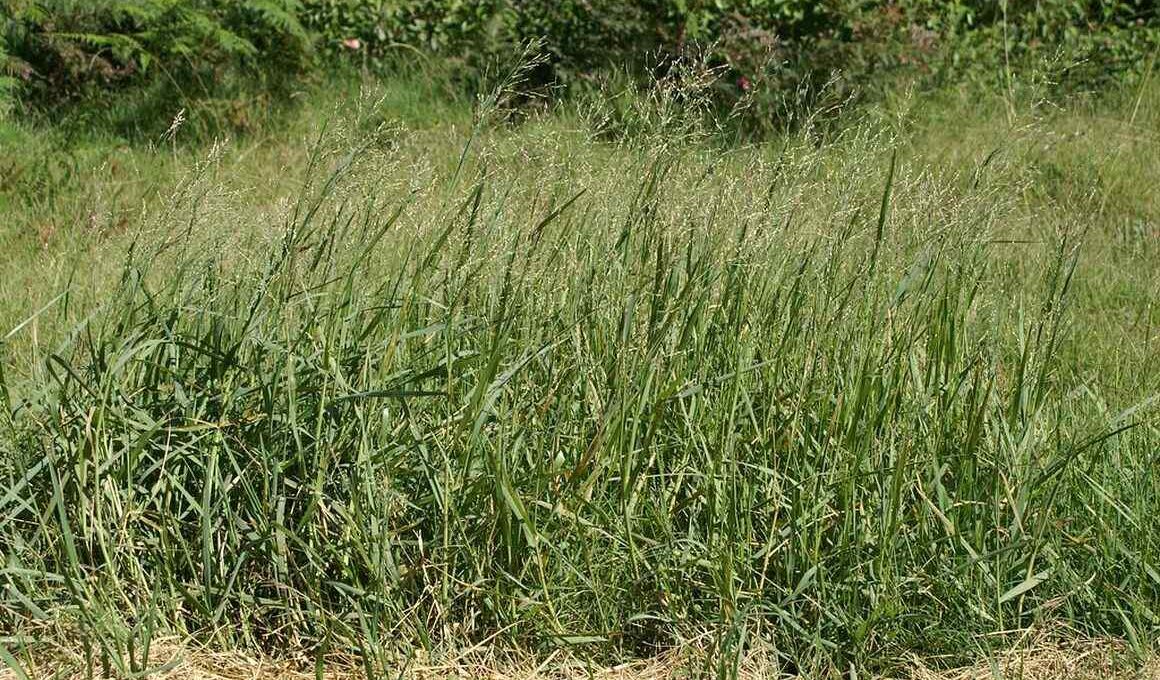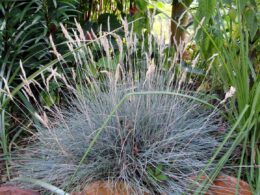What Does Torpedo Grass Look Like?
It is a perennial grass that spreads via seeds and rhizomes to form dense, low growing clumps. Its stems are flattened, with long, creeping rhizomes and short, thick underground stolons. The ligule is membranous, and the leaf blade is stiff, linear, flat or folded and leaf sheaths are hairy. The inflorescence is a loose panicle with small spikelets. Rhizomes grow underwater or along the ground, forming floating mats. They can reach a length of 20 ft and a soil depth of 23 ft. They may produce a mat that is 5.9 inches thick.
Torpedograss Distribution and Habitat
This grass grows commonly in disturbed areas such as roadsides, lawn grass, pastures, stream banks and other moist or poorly drained soils. It is a common weed of turfgrass and forage crops. Torpedo grass is found in the southern region of the United States and throughout Central America, and is native to Asia and Africa.
How Does Panicum Repens Reproduce?
Like most grasses, torpedo has a root system that goes deep into the ground and helps it stay strong in the face of wind, rain and other natural distresses. Unlike most grasses, however, it also has a webbed network of smaller roots that grow just under the surface of the soil. These help hold everything together at ground level and allow new shoots to spring up in places where they might not have been before. Torpedo grass is a tough plant – it’s hardy enough to thrive in damp or dry spaces, as long as there’s some sunlight and fertile soil – and these rhizomes are what make that possible.
Why Does Torpedo Grass Grow So Fast?
The reason torpedo grass grows so fast is that it has evolved to survive dry periods. Its roots spread out horizontally underground, then send up new shoots when moisture returns. This adaptation means that the grass can start growing as soon as water reaches its roots, which makes it very hard to keep from sending up new shoots in your yard. The only way to get rid of it is to dig out every piece of its root system and remove them so that none of the roots remain underground.
How Does Torpedo Grass Affect Your Lawn?
While this fast-growing species does provide some benefits, such as stabilization for erosion prone land and nutrient cycling, it can also cause a number of negative effects in both natural and urban ecosystems.
Outcompeting Native Species
Torpedo grass often outcompetes native species for resources like water and sunlight, leading to the decline of native wildlife populations. Not only does Torpedo grass diminish biodiversity in affected areas, but it can also interfere with important ecosystems functions such as carbon sequestration and pollination.
Disrupting Drainage
Additionally, the dense roots of this invasive weed can disrupt the normal drainage patterns of wetlands and other bodies of water. In addition, the thick network of roots can clog pipes and reduce the efficiency of irrigation systems.
Ways to Get Rid of Torpedo Grass in Your Lawn
Panicum repens, more commonly known as torpedo grass, is a noxious weed that can quickly take over a lawn or garden bed. This tough plant is difficult to kill with herbicides, and even mowing will only temporary reduce its growth. If you’re struggling to control torpedograss in your garden, there are a few things you can try.
Chemical Weed Control
Glyphosate is a popular choice for killing torpedo grass, and it can be applied either as a foliar spray or as a soil drench. Another option is 2,4-Dichlorophenoxyacetic acid, which can be found in both liquid and granular form. When using any type of chemical herbicide, be sure to follow the instructions carefully and take steps to protect yourself from exposure.
Digging Out the Plant
One option is to dig out the plant, making sure to remove as much of the root system as possible. This method is time-consuming, but it will eventually kill the plant. You can also try smothering the plant by covering it with a layer of cardboard, This will prevent sunlight from reaching the leaves, causing the plant to die.
Can Baking Soda and Vinegar Really Kill Torpedo Grass?
There are many methods that people will try to kill torpedo grass, including baking soda and vinegar. However, despite what some may believe, these methods cannot fully eradicate this stubborn plant. Baking soda contains sodium hydroxide, a corrosive substance that can cause burning and blistering of skin when sprayed directly on the body.
Acidity in vinegar is well-known for its ability to corrode objects like metal or stone. While these substances would seem to be strong enough to kill weeds like torpedo grass, they actually just damage the leaves or stems of the plant without affecting its root system.
How Can You Prevent the Lawn From Penicum Repens?
One important factor is regular mowing, as Torres grass tends to thrive in unkempt and overgrown areas. By maintaining a closely-clipped lawn, you can discourage the spread of this invasive species. Additionally, it is important to avoid using fertilizer or pesticides on your lawn, as these can cause torpedo grass to grow more quickly or even survive dry spells. Finally, one effective strategy is regular aeration, which helps keep the soil loose and well-drained, preventing torpedograss from developing deep roots that lock it in place.
Maintain Proper Conditions
One effective solution is to make sure that the humid conditions that favor torpedo grass growth are not allowed to persist. For example, regularly watering your lawn can create a moist environment ideal for this invasive species. You can also improve drainage in problem areas by planting low-lying plants such as cattails or using landscaping stones to help carry water away from vulnerable sections of your lawn.
Image Source: Harry Rose via Flickr, CC BY-SA 2.0



















